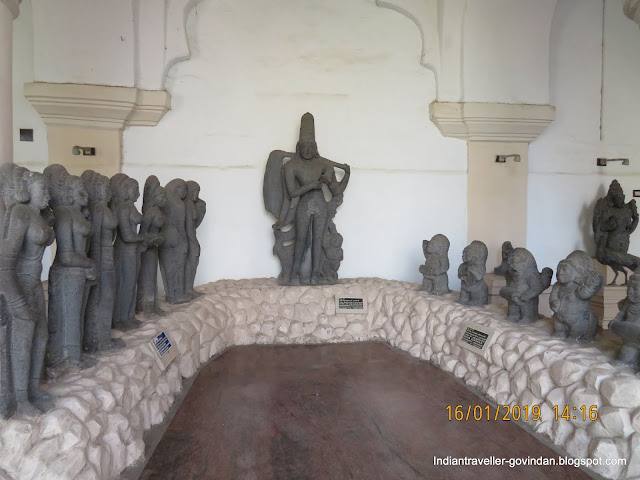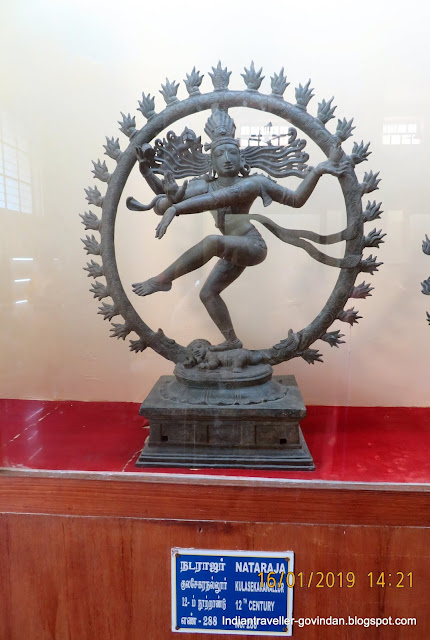GANGAIKONDA CHOLAPURAM.
 |
| Temple Entrance |
Gangaikonda Cholapuram is about 35 Kms from Kumbakonam. This temple is said to be built in 11th century (year 1035) by King Rajendra Chola who was the son and successor of Raja Raja Chola or Rajendra Chola I who has built Thanjavur Big temple. The presiding deity here is Lord Shiva.
Gangaikonda Cholapuram was erected to outshine the temple
built by his father. The temple is renowned for having the biggest Shivalingam
in the Southern part of India.The temple structure is similar to Brihadeeswara temple of Thanjavur.The
whole temple is covered with rich and intricate carvings that are exclusive to
Chola style. Beautiful sculptures adorn the walls and ceilings of Gangaikondacholapuram.
As we enter, we can see a huge Nandi in front of the temple. This is similar to the Nandi in Thanjavur Big temple.
 |
Monolith Nandi
|
We have to climb a few steps to enter the mandapam which leads to the sanctum. The Shivalingam here is said to be 60 feet in circumference and a height of 13 feet.This is supposed to be the largest Shivalingam in south India. Daily Puja is performed here even to this day.
There is a well in the premises believed to be filled with Ganga water brought from Ganges after Rajendra Chola defeated Northern kings. This well is near Simhakeni, a cave built in the form of a lion. Even to this day, water from this well is used for abhishekam.
We find shrines of Viswanathar (Kashi) and Ramanathar (Rameswaram) and once you visit both these temples, and complete a Pradikshanam (Circumbulance), it is believed to be equivalent to completing Kashi and Rameshwaram pilgrimage.
There is a Shrine for Goddess Durga called Vijaya Durga where kings first worship and leave for expedition and come back victorious.
 |
Nandi
|
 |
| Front View Of Temple |
The images of dancing Nataraja and peaceful Saraswati are beautiful and reflect the creativity of the sculptors. We find statues of Ardhanareeswara, Surya, Vishnu, Lakshmi, Lingodbhava, Dakshinamurthy etc. in the temple. This temple was raged during Malik kafur's invasion and other subsequent wars by invaders till Vijayanagara rulers after their winning war against Sultans, renovated the temple.
 |
| Dwarapalaka |
 |
| Sculpture Of Shiva Garlanding King |
 |
| Sculpture in the temple |
 |
| Lord Vishnu |
 |
| Nataraja |
 |
| Temple Gopura with Sculptures |
 |
Simhakeni |
 |
| Lakshmi |
 |
| Shiva blessing Markandeya |
 |
| Durga Temple |
 |
| Saraswathi |
 |
| Shiva Parvati on Dhwaja Stambha |
 |
| Gajalakshmi |









































































